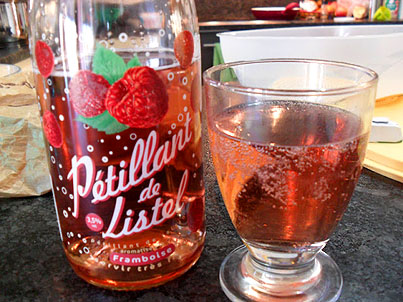 I started bottling a Red Zinfandel which I started in March. It is now June 29. I noticed bubbles in the bottles as I was filling them. I tasted the wine and it felt like it was slightly carbonated. The SG is .998. What might I do to prevent any exploding bottles or should I put the wine back into a carboy and make adjustments. This is the 7th or 8th wine I have made and I have had no problems in the past with either reds or whites.
I started bottling a Red Zinfandel which I started in March. It is now June 29. I noticed bubbles in the bottles as I was filling them. I tasted the wine and it felt like it was slightly carbonated. The SG is .998. What might I do to prevent any exploding bottles or should I put the wine back into a carboy and make adjustments. This is the 7th or 8th wine I have made and I have had no problems in the past with either reds or whites.
Thank you for your prompt response.
Tom
Name: Tom M.
State: New York
Hello Tom,
What you are most likely seeing is the leftover CO2 gas from the original fermentation. A wine fermentation creates both CO2 gas and alcohol. The CO2 gas is what you see coming through the air-lock. The CO2 gas is also the same stuff that’s puts the fizzy in beer and soda pop.
Most of the gas wants to leave, but some of it will stay saturated into the wine. It is only when the wine is agitated that it will take the opportunity to escape. This result is the bubbles you are seeing.
One thing you should do is degas the wine before bottling. Degassing the wine is simply agitating it so that the CO2 gas will leave before bottling. If you made your wine from a wine ingredient kit, the directions generally say to stir or shake the carboy before adding any clarifiers and bottling. If this is a step you did not do, or do enough, then this is what you are seeing.
One handy piece of wine making equipment we offer is a Degassing / Mix Paddle. It is a paddle that actually chucks onto a hand drill. The paddles are hinged so that it folds up small enough to fit into the opening of a glass carboy. Just stick it into the wine and pull the trigger.
I would like to point out the CO2 gas does not negatively affect the wine in any way. Upon decanting the wine you will see some bubbles, but nothing near to the degree of a sparking wine. A sparkling wine has a lot more CO2 gas in it. It is kept in the wine under pressure. This wine will not be under pressure in any way. The wine will only be holding the CO2 gas it can without pressure, which is not very much. Wines like this are known as crackling or petillant wines.
To sum up, the only way the bubbles could be causing a problem is if the wine were still fermenting. With the reading you gave of .998 on your wine hydrometer, this is not very likely. This reading indicates that there are no sugars left to ferment. If you have already bottled the wine there is no reason to be concerned. If you haven’t that you have the opportunity to degas the wine completely then bottle, but this is not necessary from a safe wine perspective.
Happy Winemaking,
Ed Kraus
———————————————————————————————————
Ed Kraus is a 3rd generation home brewer/winemaker and has been an owner of E. C. Kraus since 1999. He has been helping individuals make better wine and beer for over 25 years.

I need to degas a strawberry wine that is in a 4L bottle besides just sticking something in there and stirring is there a paddle on the market that will fit in a 1 gallon or 4litre bottle. plus any tips on how to add sugar would help… this is my first attempt at 1 gallon wine from fruit.
Larry, the degassing / mixing paddle link to in the above post should fit in the opening just fine.
Hello I started a must with fresh plums only to find out I was out of pectic enzyme. Can I add the enzyme after fermentation? Is there anything else I could use to ensure a clear wine?
Thank you
Michael
Michael, yes you can add the pectic enzyme after the fermentations starts. We always recommend doubling the standard dose in this situation. More strength is needed because of the shorter amount of time it has to work.